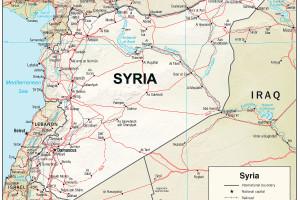Russia’s Promising Peace Plan for Syria

(Bloomberg Editorial – bloomberg.com – November 13, 2015)
The U.S. and its allies have reason to be skeptical of Russia’s new plan for peace in Syria. The proposal has arrived, after all, just as Russian airstrikes have begun to help President Bashar al-Assad to his first military successes since they began. Nevertheless, the plan contains some ideas that could help end a conflict that’s killed 250,000 people and sent millions of refugees as far as Europe.
What’s most encouraging about the eight-point plan is that it reflects some change in thinking about the Syrian rebels. No longer does Russia dismiss all of Assad’s armed opponents as terrorists. Now it is asking the diplomats who will gather in Vienna on Saturday to draw up two lists, one that designates terrorist organizations in Syria and another that identifies legitimate opposition groups that can take part in peace talks.
Such a strategy is probably the only way to unwind Syria’s complex proxy war, though it isn’t proving easy for the sides to agree on which groups are which. Russia wants the terrorist list to be long, so it can attack as many of Assad’s opponents as possible. Saudi Arabia and Turkey want it to be short. The U.S., too, wants to be sure that no militias it has been supplying with weapons are designated as terrorists.
Any breakthrough for Syria would also require an end to the deadlock over Assad’s future role. That can be achieved if the Syrian side, backed by both Russia and Iran, can accept a less important role for the current president, by coming to a temporary acceptance of the soft partition of Syrian already in place.
Syria’s president cannot simply be put back in charge of people he’s been attacking for the past four years — not even after an 18-month constitutional transition, as Russia suggests. Russian President Vladimir Putin may hope he can ensure that happens by continuing the war on Assad’s side. The U.S. should help prevent that prospect by building safe zones and strengthening support for the rebel militias it works with.
Equally, however, Assad cannot simply be removed. That would invite institutional collapse and potential catastrophe for the roughly 12 million people still under his control, many of them religious minorities who have reason to fear Syria’s Sunni rebels.
If the diplomatic process in Vienna is to have a productive future, the U.S., Russia and all other players must accept that, during Syria’s inevitably long transition, local security is best left in local hands, allowing Assad to remain in place without threatening people in rebel-controlled areas. Syria has already broken into sections, and putting the country back together will take time. Russia’s plan isn’t enough to achieve peace or unification, but it can make a start.
Article ©2015 Bloomberg L.P. All Rights Reserved. Article also appeared at
bloombergview.com/articles/2015-11-13/russia-s-promising-peace-plan-for-syria
